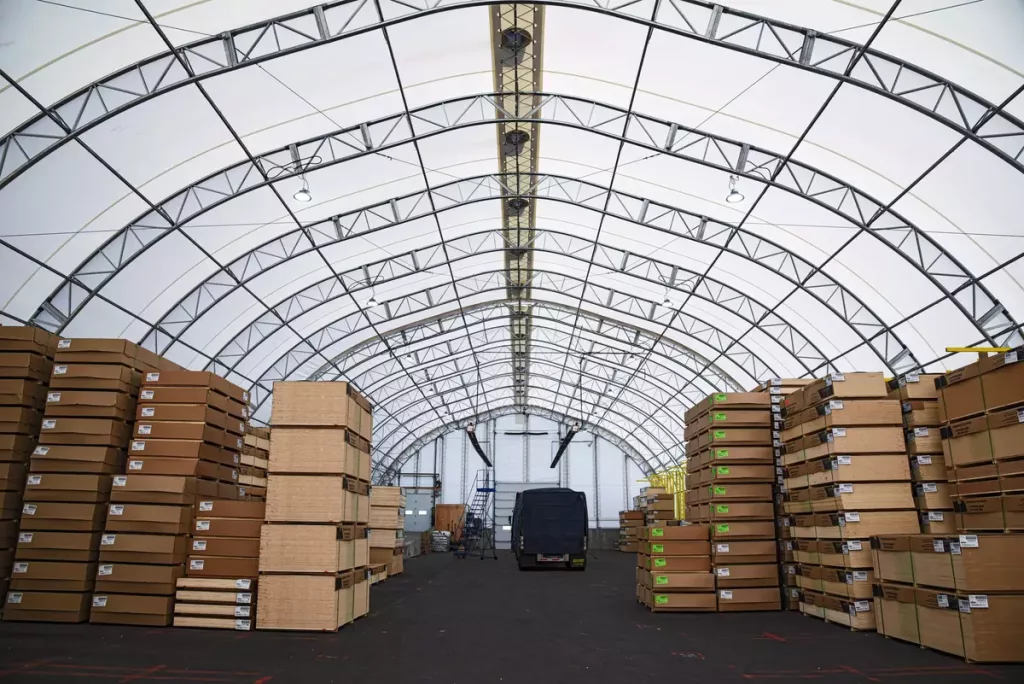In an era where efficiency and sustainability are paramount, the rise of fabric buildings presents a significant shift in architectural trends. Surprisingly, a recent industry study revealed that fabric buildings can be up to 30% more cost-effective than traditional structures, underscoring their growing popularity.
This article delves into the world of fabric buildings, an innovative solution that combines practicality with modern engineering. While traditional buildings have long been the norm, fabric buildings offer a unique blend of flexibility, efficiency, and environmental friendliness, making them an increasingly sought-after option in various sectors. From their construction process to their diverse applications, we will explore how these structures stand apart, offering insights into their maintenance, customization possibilities, and their impressive lifespan. Whether you’re an industry professional, a business owner, or simply intrigued by the latest trends in construction, join us in discovering why fabric buildings are not just an alternative, but often a superior choice over traditional structures.
Understanding Fabric Structures
Definition and Basic Characteristics
Fabric buildings are a class of engineered structures that use high-quality, durable fabric, often tensioned over a metal frame. This combination offers a unique blend of strength and flexibility. These buildings are known for their quick installation and modular design, making them suitable for a wide range of applications.
Construction Process
The construction of fabric buildings involves anchoring a strong, lightweight frame and stretching a weather-resistant fabric over it. The process is not only quicker but also less labor-intensive compared to traditional construction, offering a cost-effective solution without compromising quality.
Comparing Fabric and Traditional Buildings
Structural Differences
Unlike traditional buildings, which rely on rigid construction materials like wood, steel, or concrete, fabric buildings offer a degree of flexibility and resilience against environmental factors. The aerodynamic shape of these buildings allows them to withstand high winds and heavy snow loads effectively.
Durability Comparison
Fabric buildings structures, contrary to common perceptions, are extremely durable. The fabric used is treated to be UV resistant and is less susceptible to corrosion, making them a long-lasting alternative to traditional structures.
Benefits of Fabric Buildings
Cost-Effectiveness
One of the most compelling advantages of fabric buildings is their cost-effectiveness. Lower construction and maintenance costs, combined with faster setup times, translate into significant savings, particularly for businesses looking to reduce capital expenditure.
Customization and Versatility
The modular nature of fabric buildings allows for immense customization. They can be designed to fit specific spatial needs and are easily expandable. This adaptability makes them suitable for industries ranging from manufacturing, agriculture to aviation.
Environmental Benefits
Fabric buildings score highly on sustainability. The materials used are often recyclable, and the buildings themselves require less energy for heating and cooling, thanks to their natural insulation properties.
Practical Applications
Industry-Specific Uses
From warehousing and storage facilities to sports arenas and exhibition spaces, fabric buildings have found a place in virtually every industry. Their ability to provide large, unobstructed interior spaces makes them particularly useful for activities requiring large, open areas.
Case Studies
Real-world applications, like the rapid construction of emergency storage facilities or the use of fabric buildings in harsh climatic conditions, underscore their versatility and resilience, providing practical examples of their benefits.
Maintenance and Longevity
Maintenance Requirements
Fabric buildings require minimal maintenance. The need for routine painting or rust-proofing, common in traditional buildings, is significantly reduced, lowering long-term upkeep costs.
Lifespan and End-of-Life
With a lifespan often exceeding that of conventional buildings, fabric buildings offer long-term value. At the end of their life cycle, many components of fabric buildings can be recycled, reducing environmental impact.
Conclusion
Fabric buildings represent a leap forward in construction technology, combining cost-efficiency, durability, and environmental sustainability. As the world shifts towards more innovative and adaptable building solutions, fabric buildings emerge as a compelling choice for a wide range of applications. By understanding their advantages and diverse applications, we can appreciate why fabric buildings are not just an alternative but a preferred choice in modern construction.

